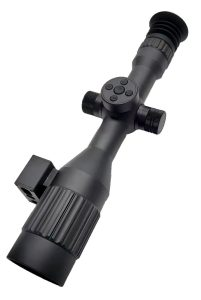How Night Vision Rifle Scopes Work?

How Night Vision Rifle Scopes Work?
Night Vision Rifle Scopes work by amplifying existing ambient light (like starlight or moonlight) or by using an infrared (IR) illuminator to create their own light source, which is then detected and converted into a visible image.
Here's a simplified breakdown:
1. Light Collection: The objective lens gathers available light (visible or IR).
2. Photocathode Conversion (for traditional NV): This light strikes a photocathode tube, which converts the photons (light particles) into electrons.
3. Electron Amplification (for traditional NV): These electrons are then multiplied significantly by a microchannel plate (MCP).
4. Phosphor Screen Conversion (for traditional NV): The amplified electrons strike a phosphor screen, causing it to glow and create a visible image (usually green or white).
5. Digital Sensor and Processing (for digital NV): Instead of a photocathode, digital scopes use an electronic sensor (like a CMOS sensor) to detect light. This signal is then digitally processed, amplified, and displayed on a screen.
6. Eyepiece Viewing: The user looks through the eyepiece to see the magnified and intensified image.
Essentially, they make very faint light visible to the human eye, allowing you to see in low-light or completely dark conditions. Digital scopes achieve this electronically, while traditional image intensifier tubes use a more direct light-to-electron-to-light conversion process.
- Art
- Causes
- Crafts
- Dance
- Drinks
- Film
- Fitness
- Food
- Games
- Gardening
- Health
- Home
- Literature
- Music
- Networking
- Other
- Party
- Religion
- Shopping
- Sports
- Theater
- Wellness


